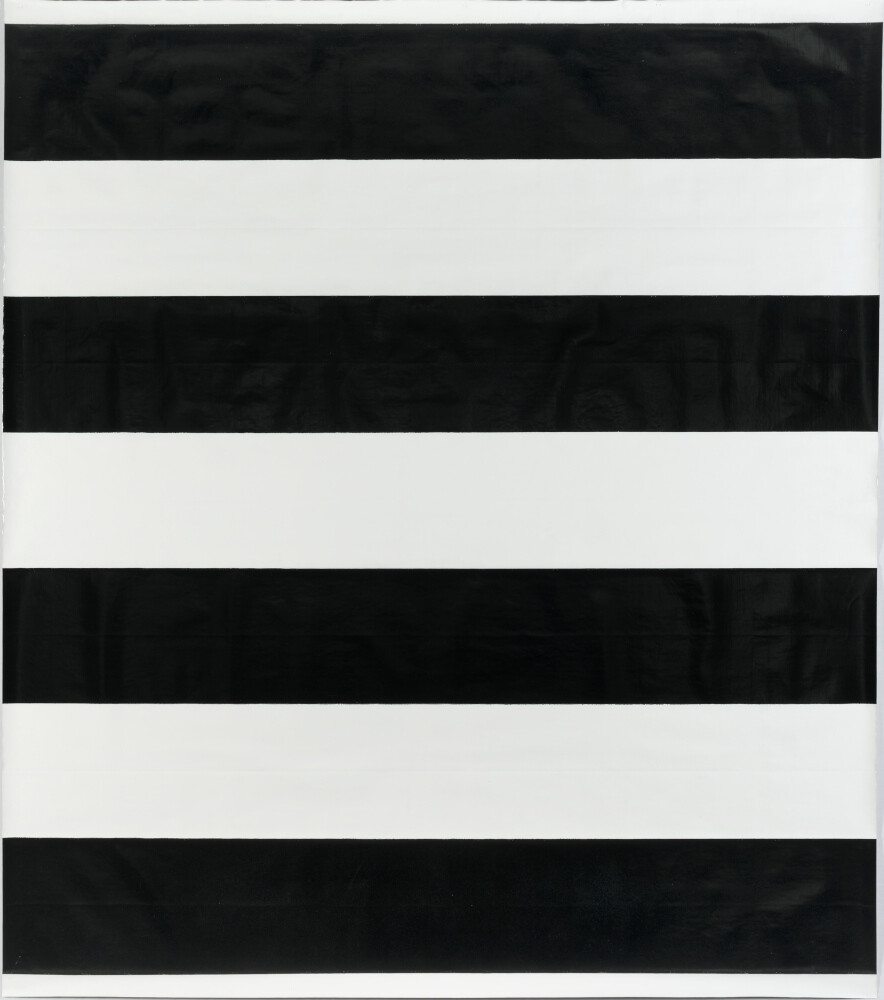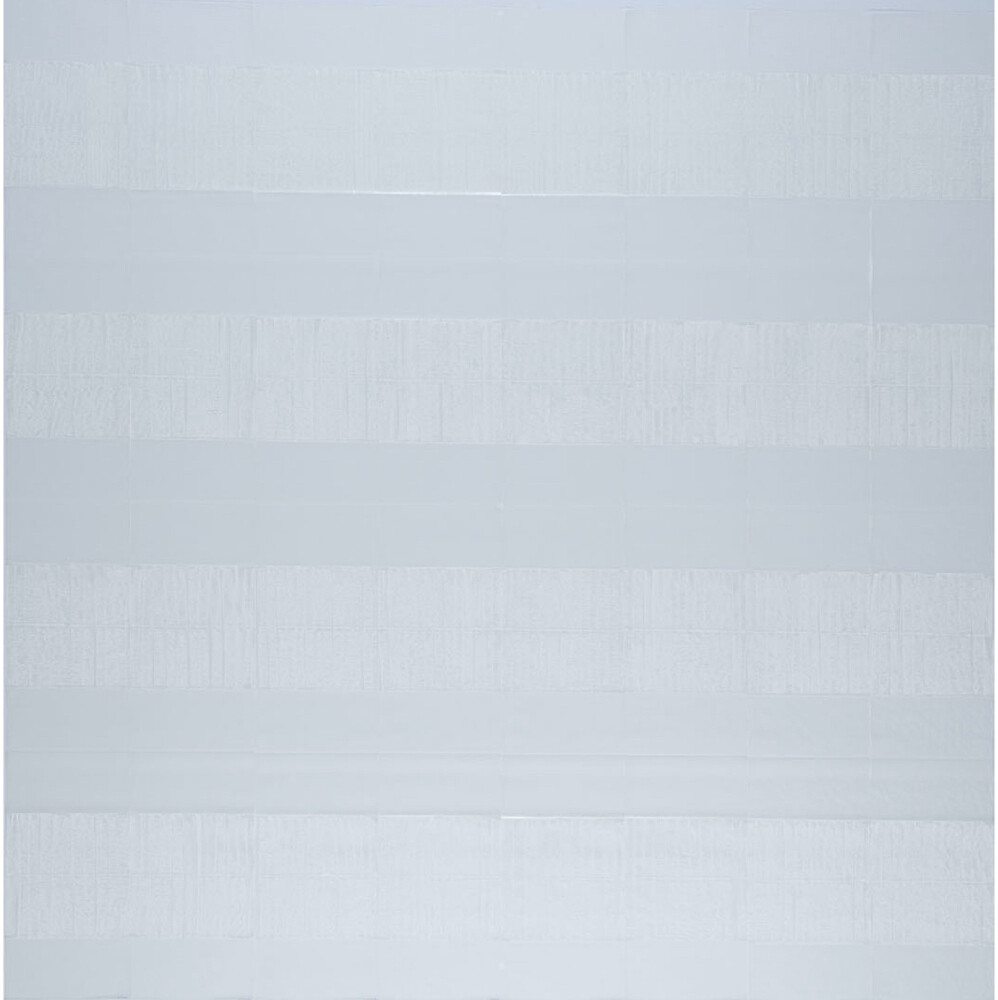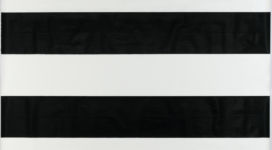| MICHEL PARMENTIER | Exhibition 2022 | |
Michel Parmentier was born in Paris in 1938. A leading “radicalist” figure on the French painting scene, he studied at the École des Métiers d’Art, where he met Daniel Buren, founding the avant-garde group Buren-Mosset-Parmentier-Toroni (better known by the acronym BMPT) with him in 1966. Parmentier’s stylish début took place in 1962 with his participation in the Jeune Peinture exhibition in Paris, where received an enthusiastic reception from the majority of the critics. Winner of the Prix Lefranc in 1963, he took part in numerous group exhibitions.
The artist made a name for himself in the 1960s with his pictures of horizontal stripes and his refusal to be called a “painter”. He put on provocative happenings and made minimalist works with the clear intent of proclaiming the denial of painting. As of December 1965, Parmentier’s works consisted of large canvases filled with monochrome, 38 cm-high horizontal stripes, alternated with identical white stripes. These works were made using the pliage – folding – technique invented in 1960 by Simon Hantaï (the canvas is crumpled, folded, then colour is applied and the canvas is unfolded, leaving ostensible empty sections interrupted by vibrant stains of colour) which from now on would become the artist’s single working method. Parmentier devoted himself to these paintings for three years, changing the colour of the stripes each year: blue in 1966, grey in 1967 and red in 1968. It was during the year 1968 that he «cesse définitivement de peindre» (permanently stopped painting), claiming this decision as «position critique active» (active critical position).
After a break of fifteen years (1968-1983) he take up his work again exactly where he had left off, beginning the cycle of black and white canvases. Over the next few years, he started to use different media, including paper, tracing paper and transparent polyester.
All of Parmentier’s work is marked by radicalism and the refusal to compromise on form or ideology. His canvases are not fed by discourses and interpretations; his painting is just painting, without subjectivity or expressiveness. There are only his stripes, neutral and repetitive. An iconoclastic artist, Parmentier and companions had proclaimed: ”We are not painters”, sparking a vast debate in France and Europe on the future of abstract act. He died in Paris in 2000.
The artist’s works are found in the collections of: MOMA (New York), Carré d’Art (Nîmes), Centre national des arts plastiques (Paris), Centre Pompidou (Paris), Fonds régional d’art contemporain Bourgogne (Dijon), Fonds régional d’art contemporain Bretagne (Rennes), LaM (Lille), Musée d’art moderne, d’art contemporain et d’art brut (Villeneuve-d’Asq), Musée d’art moderne Saint-Etienne Métropole, Musée de Grenoble and Musée des beaux-arts de Nantes. He is also present in prestigious private collections such as the Pinault collection.
The Parisian Galerie Jean Fournier (2011) and Galerie Loevenbruck (2014) devoted two important solo exhibitions to Michel Parmentier, in the same 2014 held at Villa Tamaris, Centre d’Art a La Seyne-sur-Mer the show curated by Guy Massaux, Michel Parmentier, Décembre 1965 – 20 Novembre 1999, une rétrospective. Some of the artist’s canvases were displayed at Punta della Dogana in Venice on occasion of the Accrochage exhibition (2016). In 2018, the first retrospective of the artist’s work in the United States was presented at the Eli and Edythe Broad Art Museum at Michigan State University.
The first Italian retrospective, Michel Parmentier. Opere e documenti, is presented by galleria Il Ponte (Florence, 2022) and the Eduardo Secci Gallery (Milan, 2023).







